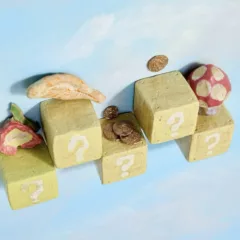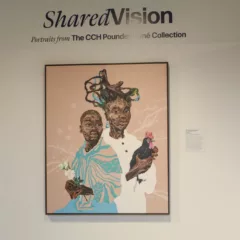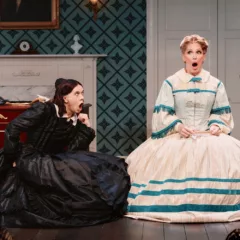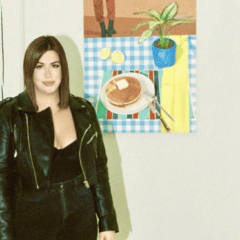Spending time with students who are about to graduate is energizing. Their happiness about accomplishing a big job is contagious, their enthusiasm for life bubbles up right over any angst about the future. Seven effervescent Masters’ candidates in the Moore College of Art and Design MFA and MA program recently allowed me into their pre-graduation world. These young ladies are thinking big, taking risks and highly committed to their chosen field. Below is my report.
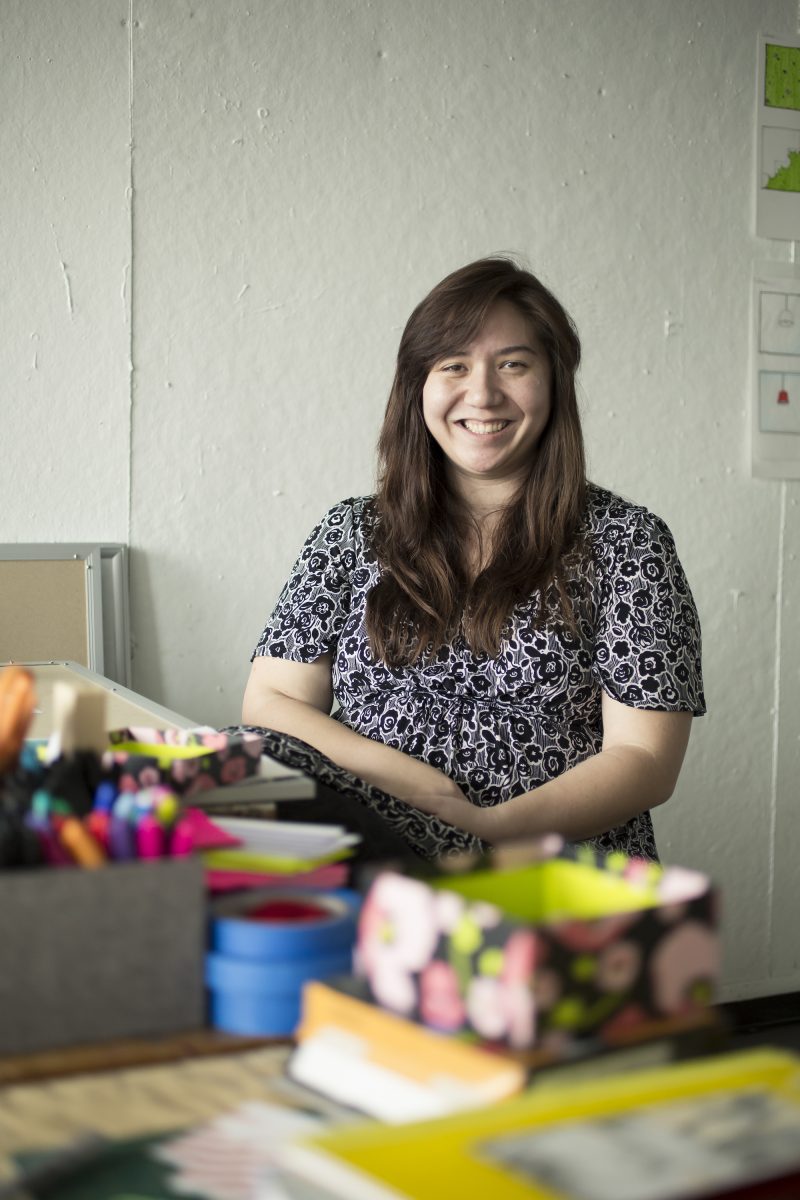
Sara Pottenger has a vision. She sees a community center where collaboration, engagement and self-empowerment take place in a judgement-free environment with people taking the lead on projects they decide they want and need. The center she envisions may be nomadic. It may be a tent, or it may be a welcoming presence inserted into a coffee shop or other space where people naturally gather and talk. The artist, who has done work in church communities in the past, envisions the center as a creative research station, a kind of community laboratory, for the people, by the people and of the people. Utopian? Yes. But our time is filled with uncertainty, and society is more divided than ever, and artists are utopians, inventors, out of the box thinkers. And a quiet and comfortable space that is not a retreat from society but an engagement center for all seems like a needed addition to anyplace and anywhere. Part of what I like about this project is its messiness. There’s no telling what the space will look like or where it will be. But with a vision, with trial and error, and with the openness to be responsive, this tent/coffee shop community lab/center can succeed.
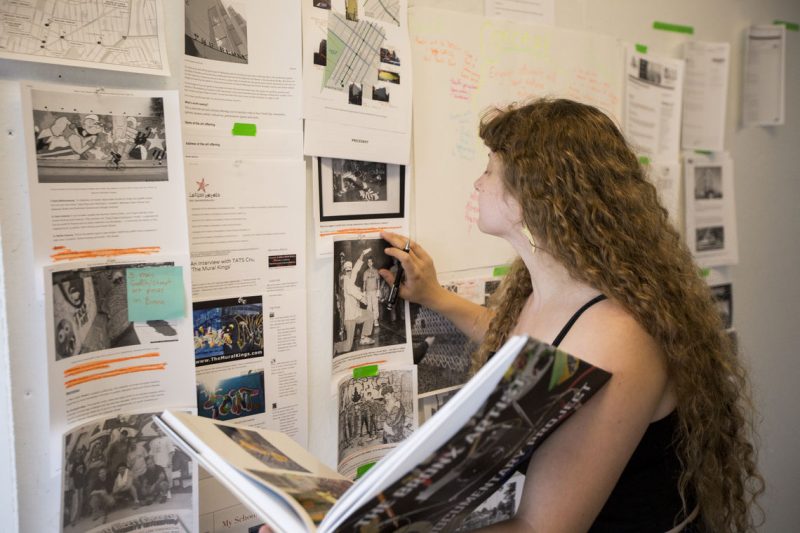
Jackie Lang is looking for the answer to an age-old question, what makes people engage with art? Does engagement happen through family interactions? Through the influence of friends or teachers? What makes one person want to go to a museum and another to a football game? As an art teacher in a New York public school, Jackie and her students have created murals together – that’s definitely one way engagement happens. When a group of students works side-by-side on a common project, enthusiasm and enjoyment can be contagious. Does this joy of making art transfer over to friends and family outside of the class, though? Jackie received a grant to research family engagement in art. As part of the project she would create two murals about diversity and identity; she would send out surveys to gather data; and, as a long-term goal, she hoped to increase family engagement with the school through the art program. Jackie’s school is in the Bronx. It is a Title 1 school where a majority of the students receive free lunch, and the student population is primarily African American and Hispanic. This initiative, Jackie says, will hopefully grow the school’s art program, which, before she came on board, was coloring book. With a smart and committed teacher, coloring books are a thing of the past and engagement with art – and with the school’s art program – is on the rise.
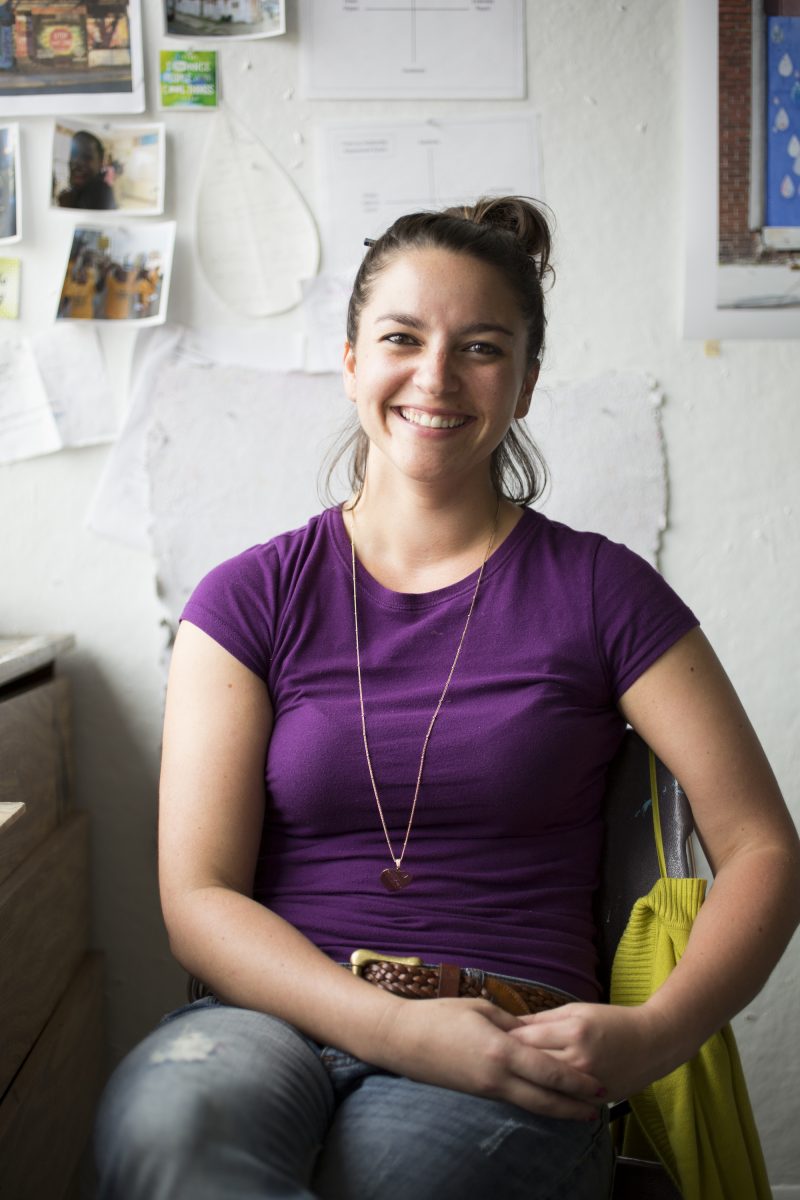
Candice Smith teaches visual art at Freedom Prep Middle School in Camden, NJ, where she created the Freedom Arts afterschool program. Freedom Arts has done several public and gallery-oriented projects and was instrumental in creating the recent “Proyecto de Lluvia” mural project. Community-based and participatory, Smith’s projects involve students making art, under her curricular guidance, and invite parents and community members to embrace the project. In her thesis exhibition, Smith will be making a conceptual recreation of the gallery in which the students worked under her guidance to make the art. The “Proyecto de Lluvia” mural project has been ongoing since 2015. In the project, Freedom Arts afterschool students conceived of a concept they believe captures the resilience of their community. Summed up in this quote, “Life is not about waiting for the storm to pass. It’s about learning how to dance in the rain,” Freedom Arts asked the Freedom Prep Middle School students “What’s Your Dance?” And the Middle Schoolers answered in their own words, which are incorporated into the mural project. The project nicely blends a teacher’s facilitation with concepts and curriculum, and the students’ decisions about the final project.
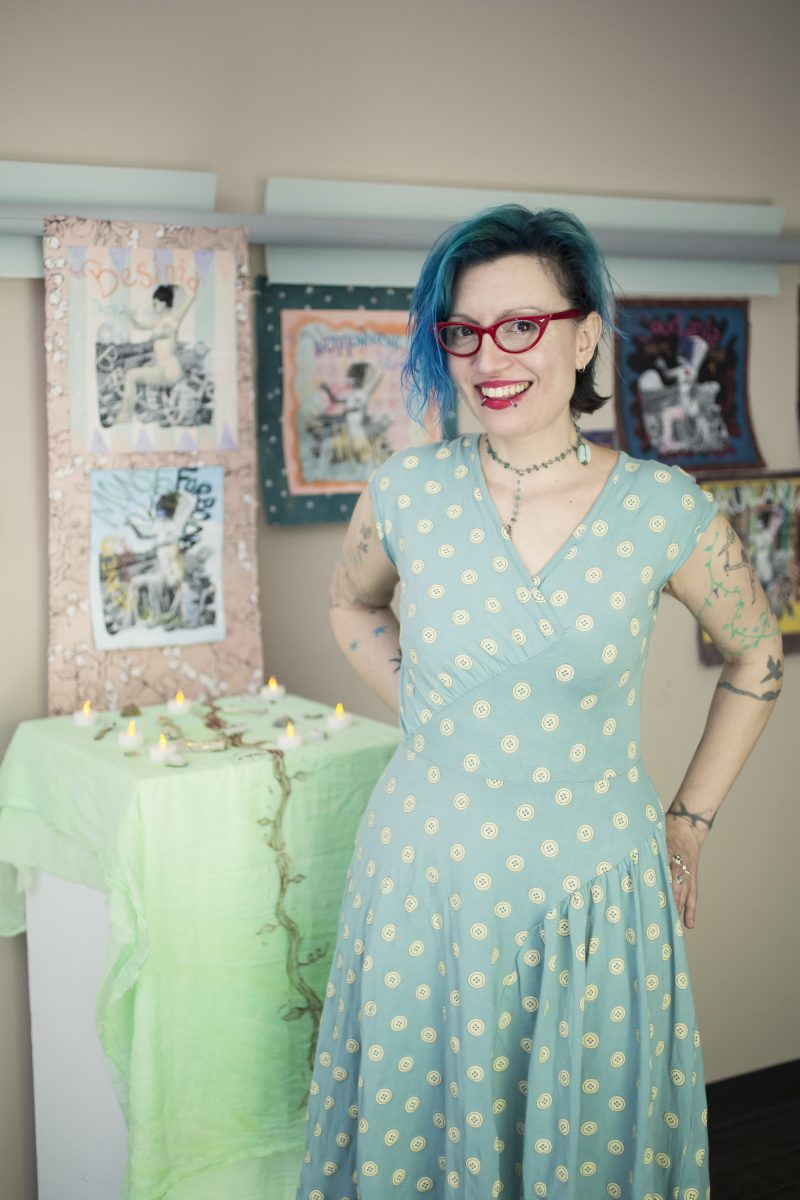
Working at the intersection of language and art, Suki Valentine weds the ephemeral and the material in ways that are autobiographical, symbolic and fantastical. The artist, who is one of the founders of the influential feminist punk movement of the 1990s, Riot Grrrl, is no slouch with words or concepts and has penned lots of zines and written fiction. During her time at Moore, Valentine has created a Codex and invented an alphabet of 40 hieroglyphic characters based on poisonous plants including one called a Suicide Tree. The glyphs are one facet of the Codex, a narrative of a hero or heroine’s journey, which is embodied in the artist’s multi-media thesis installation. A tailor’s dress form clothed with a Victorian wedding dress and embellished with the glyphs and objects like fur, feathers and bone is the centerpiece of the Codex installation. The dress sits resplendent on the floor, surrounded by a massive train that wraps, labyrinth-like around it. The train creates a boundary, a zone of mystery and perhaps magic that separates the bridal garb from the world. A little like Louise Bourgeois, whose symbolic and darkly threatening works are also autobiographical, Valentine is treading deep waters. Bourgeois’s sculptures convey emotions — fear, loneliness, pain, desire, which for her was the story. For Valentine, the art seems rooted less in emotion than in a desire to weave a story and perhaps a spell.

Sam Diamond is a master of clay. She began and still makes functional ceramic pieces. But in the not too distant past her practice shifted to sculptural clay, in works based on the human form and particularly on the human form wracked by disease and decay. Clay is a material that is a tough master. To make something successfully you must not only mold it and shape it but you must understand clay’s vulnerability to heat. There’s trial and error involved and the heartbreak of failure. Diamond says she enjoys the trial and error and considers her works experimental, and, like a “collaboration with the kiln.” The artist grew up in a house with parents who are laboratory scientists in private industry, and she herself might have been an engineer. But in high school she took art classes, got seduced by art and never looked back. There is no standard of beauty today and this is particularly true in the art world where at least since World War I and German Expressionism there has been a thread of “anti-beauty” running alongside beauty. Sam Diamond with her human forms that have been gouged and burned and hollowed out is questioning beauty. She describes her work as alluring, which is apt, since we all seem to have a strange attraction to imperfection, damage, and the anti-hero. Her works are like cautionary tales of what might happen if… And like those tales, the work may just haunt you.
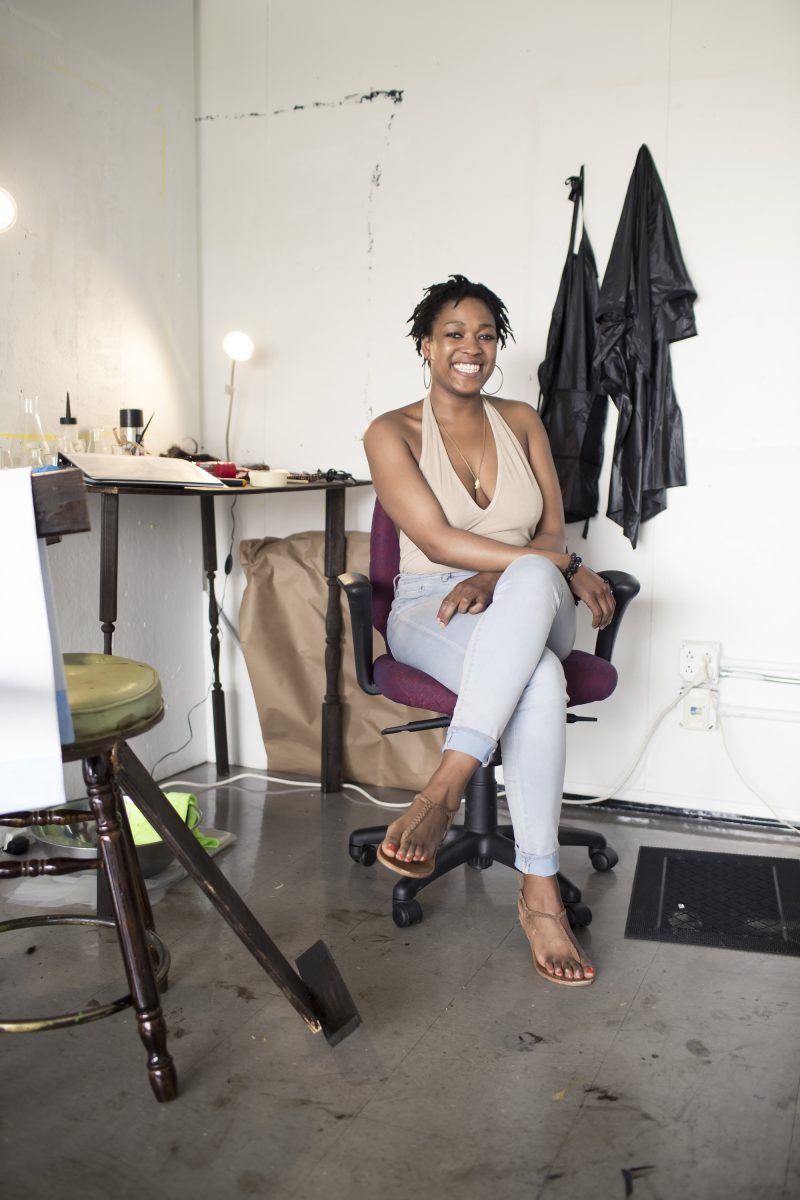
Sometimes, it’s hard to be daddy’s little girl. Like, when you’re a young woman and your dad flips out that you’re letting your hair go natural. Whose hair is it anyway? Dejeonge (Dee Dee) Reese experienced her parental melt-down some years back. It was about her hair. And she’s been thinking a lot about control and society’s definition of beauty and who gets to write that definition. Her installation takes a swipe at the Beauty Industry and its ability to make people feel they need a …nose job, breast enhancement, breast reduction, botox treatment, liposuction, tummy tuck, buttock enhancement, the list goes on. Whatever it is, you can find it, legally or otherwise, in your community. And, if you go for it, it just might damage you. Dee Dee’s installation, “On Fleek Beauty Parlor,” has a particular look – home grown. She’s created an emporium where you can get yourself snipped or enhanced, no questions asked. And no licenses in evidence. Parodying (or perhaps copying) a state of the art beauty establishment, the artist wants you to step into this place and think hard about society’s obsession with beauty, whatever that is.

What do you do when you fall into a treasure trove of family photographs from your great grandfather? Well, if you’re Jessica Szuchyt you turn them into a fine art project. Unlike Sally Mann, whose photos of her nude children playing in the woods became a cause celebre for their perhaps exploitative nature, Jess has not snapped photos of her family, exploitative or otherwise. But, she has created new photographs in the darkroom from negatives of her great grandfather’s photos, making works that twist and perhaps exploit individuals she may or may not know and who are mostly dead. Jess is a person who likes process and loves the alchemy of the darkroom. She doesn’t do digital. Of her great grandfather’s original documentary photos she doesn’t know much. He had a camera and took family photos. But she knows what she’s doing – turning those family photos into fine art. Jess’s photos, presented in a homey setting, are anything but. Through the magic of darkroom manipulation, these photos show, for example, a beautiful woman with a third eye, a child with four eyes and two noses, and other such like. It’s a macabre vision of family gone wrong. Suggestions of human mutations and science fiction are there on a literal level but on a deeper level, what’s going on is an examination of imperfection in the human form and a questioning of what it means to be human. Like photos of war injured veterans, these photos disturb – they suggest “the other,” the unknowable and the possible impossible. I asked Jess if she was worried about her family seeing the works, and she wasn’t really. Most of those pictured are now dead. Those that aren’t will never see these works.
The Moore College of Art and Design Social & Studio Practices Thesis Exhibition featuring the work of Samantha Diamond, Jackie Lang, Sara Pottenger, Dejeonge Reese, Candice Smith, Jessica Szuchyt and Suki Valentine opens July 7, 2017, with a reception at 5:30 PM. 20th and the Parkway, Philadelphia 19103
This article also appears on the Moore College of Art and Design website. Read it here.


